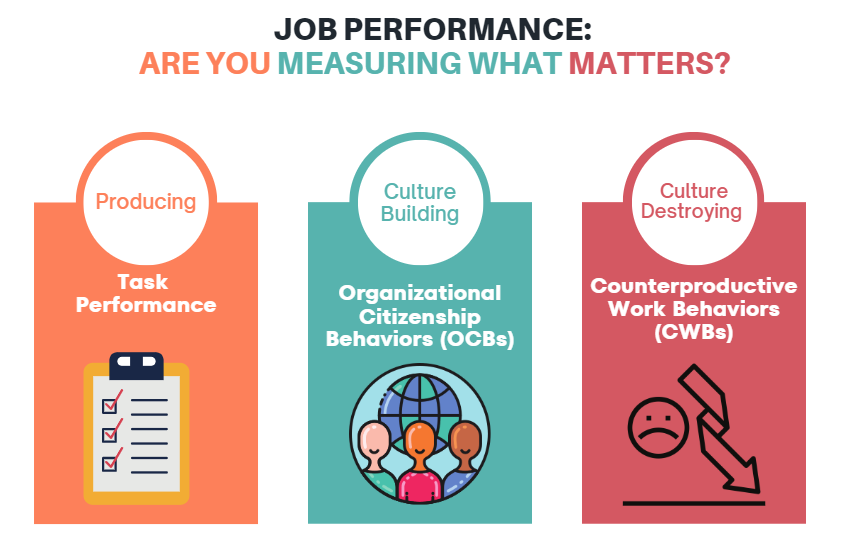Improving company culture doesn’t happen overnight. But it can get better, one person at a time, if you start hiring people who are likely to exhibit OCBs.
What are OCBs?
Organizational Citizenship Behaviors (OCBs) are discretionary behaviors that team members display that contribute positively to the performance and culture of an organization. They can be directed:
-
- towards the organization itself, such as job dedication and a willingness to work extra hours.
- towards others, such as offering to help coworkers and being courteous
- towards change, such as proactively identifying creative ways to make things, (like remote working), more efficient
Whatever form the OCB takes, it is important to note that what they all have in common is being discretionary; they are not what the person was hired to do (i.e., task performance), but rather how they do their job (i.e., contextual performance). The net positive impact that these behaviors can have on improving corporate culture cannot be overestimated.
What are CWBs?
Counter-productive work behaviors (CWBs), on the other hand, are voluntary behaviors that have a negative impact on the culture and performance of the organization. They can be:
- directed:towards the company itself, such as goldbricking/ cyberloafing
- towards others, such as engaging in intimidating or passive-aggressive behavior.
These types of actions can create a toxic environment and are estimated to cost organizations many billions of dollars annually.
Personality Traits that Predict OCBs and CWBs
The good news is that you can predict who is more or less likely to exhibits OCBs and CWBs. The science is clear on which personality traits are most predictive:
Individuals who are higher in the personality domains of Agreeableness and Conscientiousness are more likely to be good corporate citizens (i.e., exhibit OCBs) who avoid displaying negative behaviors towards others or the organization itself (i.e., CWBs).
Being high on the personality domains of Openness and Extraversion are also likely important, especially as it relates to displaying change-oriented, proactive OCBs that help to facilitate remote working in general (e.g., discovering and using new digital tools to communicate with teammates).
The Impact of Leadership Style on OCBs and CWBs
Here, the science also provides us with clear guidance. Self-reported leadership style adds value beyond personality measures in predicting leader effectiveness. In particular:
- Laissez-Faire Leaders are more likely to have direct reports who are not satisfied with their jobs, making them less likely to display OCBs and more likely to display CWBs. Laissez-Faire leadership is when the leader does not exhibit important behaviors that are necessary to create a positive environment in which people are highly motivated and productive. The negative impact of this approach is often magnified within remote teams because of the physical separation between the leader and their direct reports. Read more on this topic: Laissez-Faire Leadership – The Silent Killer.
- Leaders who exhibit a high degree of consideration for people, while providing a sufficient degree of structure, are more likely to have satisfied direct reports. In turn, they are less likely to display CWBs and more likely to display OCBs. Read more on this topic: The Secret to Effective Leadership: Keep it Simple. When leaders model OCBs, the trickle-down effect will go a long way in improving corporate culture.
The Bottom Line
By including valid measures of personality traits that predict OCBs and CWBs in your hiring process, you will be well on your way to improving corporate culture.
